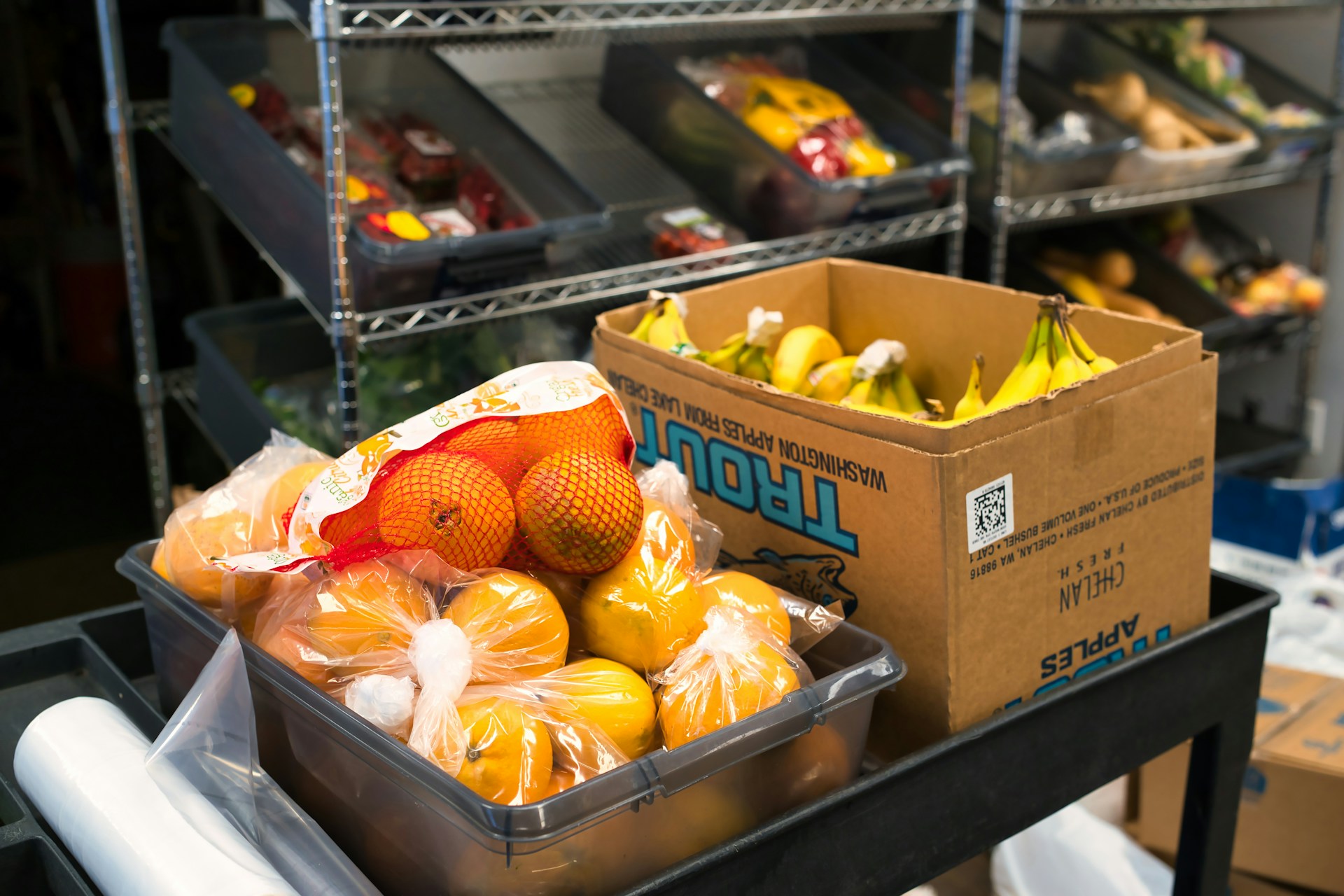Efficient inventory management is crucial in the produce industry where the margins are small and the products are perishable.
The speed at which inventory moves holds everything together, determining a firm’s profitability.
Hence, understanding and implementing the optimal inventory turnover rate can be game-changing.
In this piece, we will discuss proven strategies to optimize your turnover rates efficiently.
The goal is to minimize wastage, maximize profits, and ensure customer satisfaction.
Let’s delve into the essential practices to achieve this in today’s competitive market.
Contents
Best Practices For Produce Inventory Turnover
1. Align Product Orders with Demand Trends
One of the most crucial aspects to consider in the world of produce inventory management is the alignment of product orders with demand trends.
This process involves closely observing and understanding the demands that fluctuate based on seasons, festive times, and customer preferences.
Implementing such a strategy not only ensures that inventory remains updated but also significantly reduces the risk of wastage and aids in increasing inventory turnover.
Aligning your product orders with the changing demand trends can lead to a highly efficient system of inventory management, minimizing waste and enhancing profitability.
Strong analytics and forecasting techniques are required to be in place for effectively following these ever-changing trends.
With the advent of technology, many tools and software are available today that can accurately monitor and analyze sales data to provide robust predictions about the demand patterns.
Implementing these tools into your operations can leap your inventory management into a more successful stage as they enable you to order the right amount of produce at the right time.
However, one should be careful not to over-rely on these tools and should use them in conjunction with their own understanding of the market and their predictive intuition.
Ordering produce by continually analyzing consumer purchase behavior goes a long way in streamlining the inventory and maximizing sales.
For instance, if your data suggests a rising demand for avocados in the next month, you can preemptively order an adequate quantity of avocados to meet this anticipated demand.
There must also be a swift response to any sudden and unexpected changes in demand to maintain healthy inventory levels and a high inventory turnover rate.
In any such situation, flexibility and quick decision-making are key, along with a strong supplier relationship to accommodate these last-minute changes.
Through the alignment of product orders with demand trends, you are not only ensuring a smooth flow of operations but also significantly improving customer satisfaction as they find their preferred produce readily available.
This process, however, should be an ongoing one.Continual adjustments and monitoring must be made according to the demand patterns.
All in all, acknowledging and actively implementing this practice of aligning product orders with demand trends can greatly optimize your produce inventory management system.
Increase in inventory turnover, reduction in waste, and improved customer satisfaction are some of the many benefits that such a practice brings along.
2. Implement First-in First-out (FIFO) Inventory Method
In the vast landscape of inventory management, the First-in First-out (FIFO) method stands out as an exceptionally effective tool for produce inventory turnover.
At the heart of this method is a simple concept – the earliest stocked items should be sold before any of the newer ones.
If a business is able to properly implement this method, it can have a substantial impact on both the quality of their products and their financial success.
Under the FIFO method, the idea is to sell the oldest produce first; this approach reduces the chances of spoilage and waste, which are major concerns in the produce industry.
With perishable items like fruits and vegetables, the risk of spoilage is high, and failing to sell products before they perish can result in significant losses.
But utilizing the FIFO method can significantly lower the risk of spoilage and loss, by ensuring that older products are sold first.
Moreover, the FIFO method isn’t solely about reducing risk – it can also help a business to maximize profits by managing costs effectively.
Costs of goods often fluctuate, and usually, the older stock may have been procured at lower costs compared to the newer produce.
By selling the older inventory first under the FIFO model, businesses can secure profits from the lower cost goods.
This also allows businesses to maintain more accurate financial records as the inventory cost reported will match more closely to the most recent cost.
Additionally, it is worth pointing out that the FIFO method does not require any sophisticated software or complex systems to track inventory.
To put it in simpler terms, all it requires is a well-organized storage system which ensures that the oldest stock is always easily accessible and the first to be sold.
For businesses dealing with perishable produce, the FIFO inventory system should not just be seen as an option, but a necessity for successful operation.
By implementing the FIFO method as a best practice for produce inventory turnover, businesses can get the maximum value out of their stocked inventory, while minimizing the risk of losses from spoilage.
3. Regularly track and analyze inventory metrics
One of the best practices for a successful produce inventory turnover is to regularly track and analyze inventory metrics.
Inventory metrics provide helpful insights about sales trends, inventory levels, and product demand.
Meticulous tracking and analyzing of these metrics can assist businesses in identifying seasonality patterns, predicting future sales, and aligning product orders with current demand trends.
Routine analysis of inventory data enables businesses to minimize product waste and overstock.
The process of regularly tracking and analyzing inventory metrics helps to establish a balance between demand, supply and storage costs, reducing the likelihood of produce spoilage and improving the bottom line of a business.
Inventory metrics such as stock turnover rate, carrying costs, and gross margin return on investment (GMROI) are crucial to manage produce inventory effectively.
Inventory turnover rate indicates how many times a business has sold and replaced its inventory within a specific period.
A higher turnover rate suggests strong sales or effective inventory management.
In contrast, a low turnover rate may indicate poor sales, overstocking, or obsolete inventory, which can lead to excessive waste, especially in the case of perishable produce.
Carrying costs, which include storage costs, insurance, and potential obsolescence, reflects the cost a company incurs by holding inventory over time.
It is, therefore, essential to keep the carrying costs as low as possible to increase profitability.
The Gross Margin Return on Investment (GMROI) metric demonstrates how much profit a business makes for every dollar invested in inventory.
A higher GMROI indicates more efficient inventory use.
Implementing automated inventory management software can streamline tracking and analyzing inventory metrics.
Such software can provide real-time data, allow for accurate forecasting, and help prevent understock or overstock situations.
Overall, the practice of regularly tracking and analyzing inventory metrics plays a pivotal role in managing a successful produce inventory turnover strategy.
4. Engage in Clearance Sales for Excess Stock
One of the best practices to improve produce inventory turnover involves the implementation of clearance sales for excess stock.
Clearance sales serve multiple purposes, they not only help in clearing out excess inventory but they also generate more cash inflow and attract customers.
For any retail business, it’s crucial to avoid stockpiling products that do not sell quickly.
Having excess stock takes up valuable storage space that could be used for items with higher demand.
An effective clearance sale strategy can quickly eliminate excess inventory leading to more streamlined and profitable output.
This practice is especially important for produce retailers as fruits and vegetables have a shorter shelf life than other retail items.
Excess produce inventory can quickly become a significant loss for the retailer if it is not sold before spoiling.
Therefore, clearance sales are an effective way to ensure that produce is sold and revenue is earned before the goods reach their expiration dates.
Moreover, clearance sales can also spark customer interest and drive traffic to your store.
Products sold at reduced prices attract bargain hunters and can help to convert them into regular customers.
Clearance sales also give retailers an opportunity to introduce customers to items they may not have considered purchasing at regular prices.
Therefore, clearance sales for excess stock are an integral part of effective inventory management strategies.
One crucial point to remember while executing clearance sales is to effectively advertise the sale, so customers are aware of it.
Another key consideration is to appropriately price the clearance items to ensure they sell quickly and make room for new inventory.
It is also necessary to regularly assess the store’s inventory position to determine when a clearance sale is necessary.
This will help to avoid sudden overstock situations and maintain a healthy inventory system.
5. Promote seasonal produce for quick sales
Handling produce inventory can be a challenging task because of the short shelf life of the items involved.
One essential best practice that can enhance produce inventory turnover is the promotion of seasonal produce for quick sales.
Promoting seasonal produce not only helps with maintaining fresh inventory but also makes use of consumer preferences for locally grown, in-season items.
Purchasing produce that aligns with the seasons can be an effective way of managing risk due to issues like climate change and limited availability during certain parts of the year.
This naturally balances supply and demand, making it easier to sell a larger quantity in a shorter period. That, in turn, keeps the inventory fresh and reduces wastage, leading to better profits and customer satisfaction.
On a similar note, retailers should prioritize advertising seasonal produce extensively to attract more customers.
This not only moves the product quickly but also enhances the store’s image as a supplier of fresh, healthy produce.
Furthermore, offering discounts on bulk purchases of seasonal produce can also be a helpful strategy to increase sales.
Another beneficial tactic is to demonstrate uses for the produce in store, possibly through samples or recipe demonstrations.
It should be remembered that communication with customers is key when it comes to selling seasonal produce.
Informing them of the arrival of new in-season items or providing suggestions on how to use unusual produce can boost shoppers’ engagement and foster loyalty.
Use of digital platforms for promotion is another method that can contribute to quick sales of seasonal produce.
Providing updates on social media regarding new seasonal arrivals, sharing recipe ideas and offering discounts to online shoppers are all ways to stir up interest and get the produce moving off the shelves quicker.
In the end, promoting seasonal produce for quick sales is all about offering value to the customer – freshness, flavor, and variety – while also caring for the retailer’s inventory and its turnover.
Your goal should be to ensure that you have the right produce at the right time, generating more sales, reducing waste, and contributing to the overall health of your inventory management system.
The Bottom Line
Through meticulous alignment of product orders with demand trends, businesses can enhance their profitability and reduce waste.
Adopting the First-in First-out inventory method aids in maintaining product freshness and relevance, ultimately saving money that would otherwise be spent on storing outdated inventory.
Furthermore, regular analysis of inventory metrics equips businesses with invaluable insights to optimize their stock management and predict future needs.
Dealing with excess stock through clearance sales enables businesses to recoup capital and free up storage space, while strategically promoting seasonal produce ensures speedy sales and customer satisfaction.
In essence, effective inventory management hinges on foresight, adaptability, and strategic promotion initiatives.



